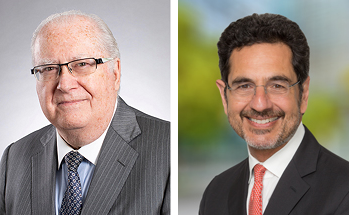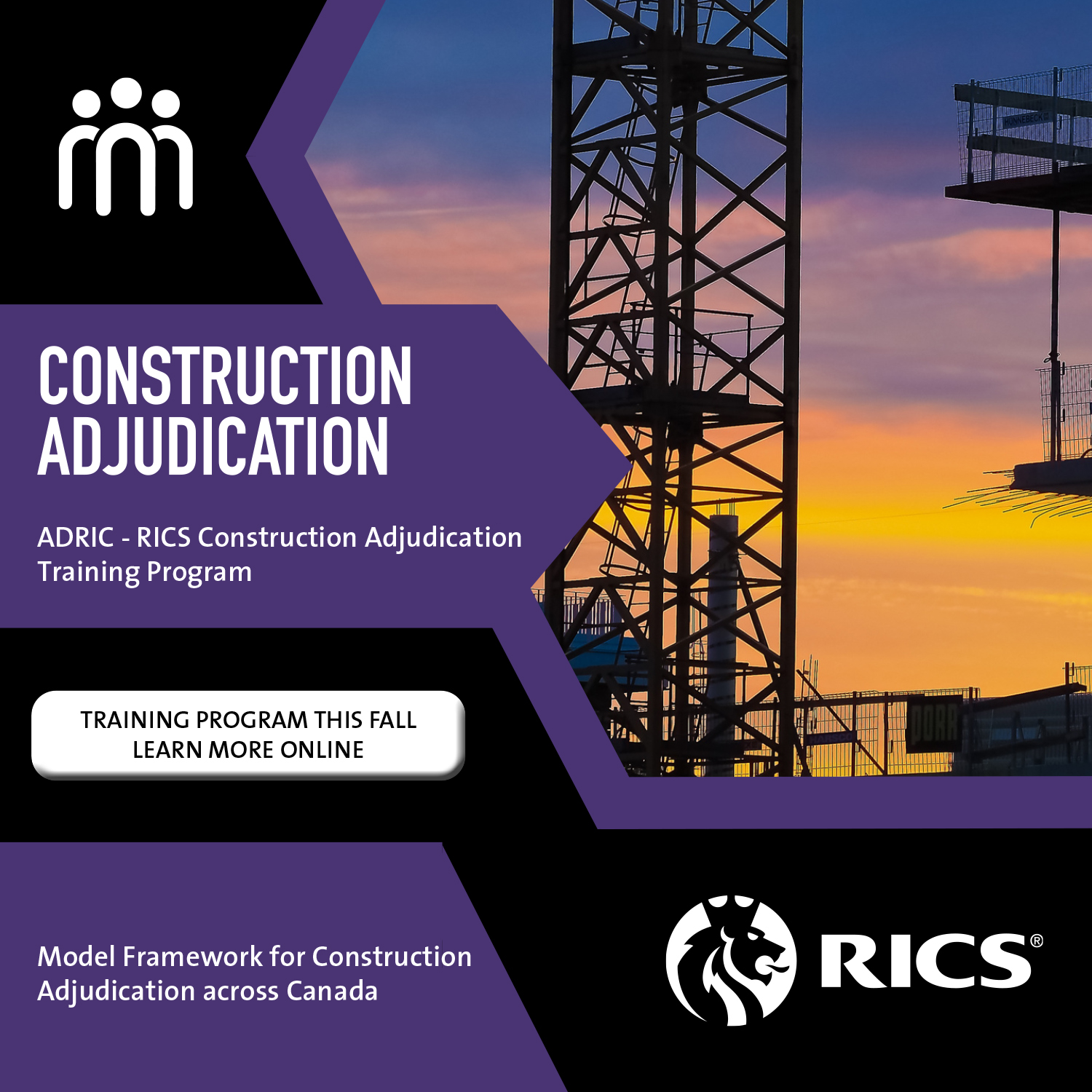Ordering Virtual Hearings over the Objections of a Party
By J. Brian Casey and Grant Hanessian

What are the legal issues in Canada and the U.S. when one party to an ad hoc arbitration requests a hearing by way of videoconferencing, or the tribunal advises the parties it wishes to hold the hearing by way of videoconferencing, and one party objects?
Jurisdiction [1]
In Canada, under the Model Law Article 19, if the parties have not agreed on a procedure, the arbitral tribunal “may, subject to the provisions of this Law, conduct the arbitration in such manner as it considers appropriate.” The provincial domestic arbitration Acts all have similar provisions. Simply put, unless there is some other provision of the Model Law, an applicable statute, or the arbitration agreement that would prevent it, the arbitral tribunal has jurisdiction to conduct the arbitration by way of videoconferencing. For instance, this implicates Article 24 of the Model Law which provides that an oral hearing must take place if any party requests it, and Article 18 which provides the parties must be treated with equality and each party given a full opportunity to present its case.
In the United States, arbitrators also have broad latitude in the conduct of arbitral proceedings, which can include the ability to conduct hearings by videoconference. Section 10(a)(3) of the Federal Arbitration Act (“FAA“) has been interpreted by the courts to mean that an arbitration award may not be vacated unless there is a “violation of fundamental fairness.”[2] Arbitrators are required only to allow each party an “adequate opportunity to present its evidence and argument.”[3] State laws are similar; New York law provides few constraints on conduct of an arbitral hearing, so long as parties are able to present evidence, and cross-examine witnesses.[4]
The need for a “hearing”
The word “hearing” has become a “generic label to describe trials, appeals, and a host of interlocutory [court] proceedings” and “contrary to the intuitive sense of the word, the “hearing” need not be an auditory experience; the evidence can assume the form of affidavits, transcripts or other documentary material.”[5] A “hearing” has come to mean the right to present one’s side of the case[6] or, as expressed in the French legal word for a hearing, an “audience.” The various provincial arbitration acts and the Model Law acknowledge this broad definition by stating a party may require an oral hearing, not simply a hearing. However, with a two-way video link, witnesses and counsel may orally present evidence and argument and the arbitrator can hear and control the process. The Canadian cases confirm[7] that a video conference proceeding is a viva voce hearing.
Equality and Fairness
Counsel may argue that it would be unfair to require cross examination of witnesses by video. Putting aside for one minute the fact that cross examination for the purpose of undermining credibility based on a witness’ demeanour alone is rare in commercial arbitrations, there is no basis anymore, with today’s technology, for arguing that use of videoconference facilities will impair the ability to see the demeanour of the witness. In Canada, in R. v. Gibson[8], the judge observed that not only could he see and hear the witness, the video actually accentuated the expressions of a witness under cross-examination. Some cases have commented that a video can actually enhance the ability to evaluate demeanour.[9] Videoconferencing does not adversely affect procedural fairness.[10]
Under U.S. law, an arbitrator may, in appropriate circumstances, choose to not hold oral hearings so long as each party is afforded an opportunity to present its evidence and argument.[11] New York courts have adopted the FAA’s “fundamental fairness standard,” which is met at its minimum when the parties have notice and opportunity to be heard—and as a result, New York law does not require formal, oral hearings. The authors have not found any case where an arbitration award was vacated under New York law because it was issued without an in-person evidentiary hearing.[12]
Practical Considerations
There is no question that equality and fairness trump the need for efficiency and economy. Best practice requires that the tribunal hear, in a formal way, any application that the hearing proceed by video conferencing where one party objects, with particular emphasis on how, precisely, the use of technology would assist or prejudice a party, rather than vague statements regarding efficiency or the need to assess the demeanour of the witnesses generally.
The person requesting the video hearing must also demonstrate that appropriate technical requirements will be met. Hearing a witness’ testimony, let alone assessing credibility, will not be facilitated if the witness proposes to call in on a cell phone. If there is any issue, the tribunal should consider including appropriate technical requirements in its order.[13]
Until events of the past few months, the default position of counsel and arbitrators was that oral hearings would take place in person. While an in-person hearing may still be the default procedure, this is changing rapidly and the burden on a party arguing for a video hearing is now quite low.
Grant Hanessian is a partner with Baker McKenzie, New York, and former head of the firm’s global International Arbitration practice group.
Brian Casey is a full-time independent arbitrator practicing out of Bay Street Chambers in Toronto.
The authors acknowledge, with thanks, the assistance of Erika Van Horne, Baker McKenzie LLP, New York.
[1] This paper does not consider the situation where institutional rules have been adopted. A number of institutional rules expressly provide for video hearings.
[2] See 9 U.S.C. §10(a)(3); Yonir Techs., Inc. v. Duration Sys. (1992) Ltd., 244 F. Supp. 2d 195, 204 (S.D.N.Y. 2002).
[3] See Tempo Shain Corp. v. Bertek, Inc., 120 F.3d 16, 20 (2nd Cir. 1997).
[4] NY CPLR § 7506(c); see also 2 Weinstein, Korn & Miller CPLR Manual § 31.07.
[5]Catholic Children’s Aid Society of Metropolitan Toronto v. O [1995] O.J. No. 3971 ¶ 30. Also see Children’s Aid Society of London and Middlesex v. A.L. 2018 ONSC 4569.
[6] See Burnley v. University of New Brunswick (1992), 130 N.B.R. 224, 238 A.P.R. 224, 98 D.L.R. (4th) 472 (NB App. Div.).
[7] R. v. Dix (1998) ABQB 370 (CanLII), 125 C.C.C. (3d) 377. Also see Duverger v. 2553-4330 Québec Inc. (Aéropro), 2018 CHRT 12 (CanLII).
[8] (2003) B.C.J. No. 812 (BCSC).
[9] R. v. Heynen (2000) Y.J. No.6 (Yukon Territorial Court).
[10] Gonzales v. Canada (Minister of Citizenship and Immigration) 2002 FCT1229 (CanLII).
[11] Yonir Techs., Inc. v. Duration Sys. (1992) Ltd., 244 F. Supp. 2d 195, 209 (S.D.N.Y. 2002) (“the lack of a formal, oral hearing does not violate [the FAA] and is not fundamentally unfair”). It does not violate due process principles to issue a decision based on written submissions alone. Id. at 209-210.
[12] See Wise v. Marriott Int’l, Inc., 2007 U.S. Dist. LEXIS 70512, * 10 – * 13 (S.D.N.Y. 2007) (no case identified holding that evidentiary hearings were required).
[13] This includes such things as minimum bandwidth, processors and software. Some arbitration hearing room providers have rolled out virtual hearing room technology packages complete with technical personnel to manage the virtual hearing. See for example www.arbitrationplace.com/arbitration-place-virtual-ehearings



















